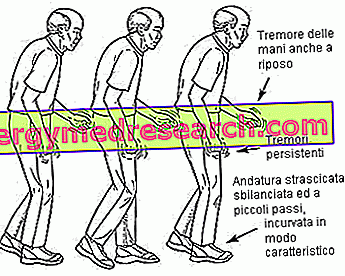See also: Gigantism
Definition
Acromegaly is a chronic, rare and debilitating syndrome caused by a hypersecretion of the hGH hormone during adulthood.
Symptoms and Complications
To learn more: Symptoms Acromegaly

Gigantism : Robert Wadlow, 2 meters and 72 cm, next to his father, shows us the effects of a hyper-secretion of GH during development.
Acromegaly : Primo Carnera, famous boxing champion, suffered from acromegaly, an endocrine disease characterized by excessive GH production even in adulthood
An excess of growth hormone during childhood and puberty is accompanied by an exaggerated growth in height (gigantism). In adulthood, on the contrary - as any further increase in shaft length is impossible - the disease causes a volume increase in the distal parts of the body (bones and soft tissues). The acromegalic patient thus develops singular features, up to a profound subversion of his physiognomy. These alterations lead to a noticeable swelling of the hands, feet, supraorbital arches and jaw (with inevitable dental diastasis and aggravation of malocclusion); therefore, they affect the bodily extremities electively, as indeed the name of the disease (from the Greek akros "extremity" and megalos "grande").
The characteristic symptoms of acromegaly evolve in an extremely slow and progressive manner, so that in general neither the patient nor the people around him can realize this. Only in a fairly advanced stage can the subject, for example, notice that the phalanges swell because the gloves, shoes or rings do not fit; the alterations of the skull make the hats too small, while the food remains remain stuck between the teeth.
At the same time the nose and lips increase in size, the cheekbones protrude and the characteristic prognathism appears; also the tongue undergoes abnormal growth (hyperglossia). More often, however, the acromegalic patient comes to the doctor complaining of the symptoms and complications that typically precede and accompany physiognomic alterations, including: headache, carpal tunnel syndrome, arthrosis and joint pain, reduced joint mobility, muscle pain, asthenia, alterations of the menstrual cycle up to amenorrhoea, erectile dysfunction up to impotence, thickened and oily skin, hypertrichosis, hyperhidrosis and bad body odors, enlargement of some internal organs (including liver, heart, kidneys, spleen, intestine and viscera in general - visceromegaly -), nodular goiter, cardiomyopathy, arterial hypertension, hoarse and deep voice, intestinal polyposis, visual changes, diabetes, severe insulin resistance, visual disturbances and urolithiasis.
Early treatment of acromegaly can prevent the onset and worsening of various complications, which in the absence of adequate medical and pharmacological intervention can become lethal.
Excessive drug treatment with hGH can also cause acromegaly in order to increase muscle mass. We notice this phenomenon comparing the photos of youth and the competitive ones of some bodybuilding champions, which highlight the physiognomic alterations typical of this syndrome.
The diagnosis of acromegaly is based on the physical examination, associated with various instrumental investigations (MRI and CT of the pituitary gland) and laboratory (GH, IGF-1, GHRH, prolactin, tolerance test to oral glucose load, measurement of the visual field and others).
Causes
The pituitary gland is a small gland located at the base of the brain, behind the upper margin of the nose. Among the various pituitary hormones, GH participates in the process of development and growth of the skeletal system during childhood and pubertal age, while in the adult it guarantees muscular and bone trophism. In this period of life the hypersecretion of GH is generally due to a benign tumor affecting the pituitary gland; more rarely, acromegaly is caused by external tumors (localized, for example, in the lungs, pancreas or adrenal glands), which produce GH directly (a very rare occurrence) or stimulate the pituitary gland to do so by releasing the GHRH hormone.
Care and Treatment
To learn more: Drugs for the Treatment of Acromegaly
The purpose of the treatment is to reduce GH production and any pituitary tumor mass. For this purpose it is possible to intervene by administering specific drugs, such as somatostatin analogues (octreotide and lanreotide, which exert a powerful inhibiting action on the secretion of GH), dopamine agonists (bromocriptine) and growth hormone receptor antagonists (pegvisomant) . Surgical therapy is performed via the transsphenoid, through an operation performed through the nasal cavity with the aim of removing the abnormal mass. The treatment of acromegaly with radiation therapy is indicated when surgery is impractical or does not produce the desired effects; however, this is a second choice treatment, both for the long time necessary to obtain a significant improvement, and for the permanent damage it causes at the hypothalamus-pituitary level.



